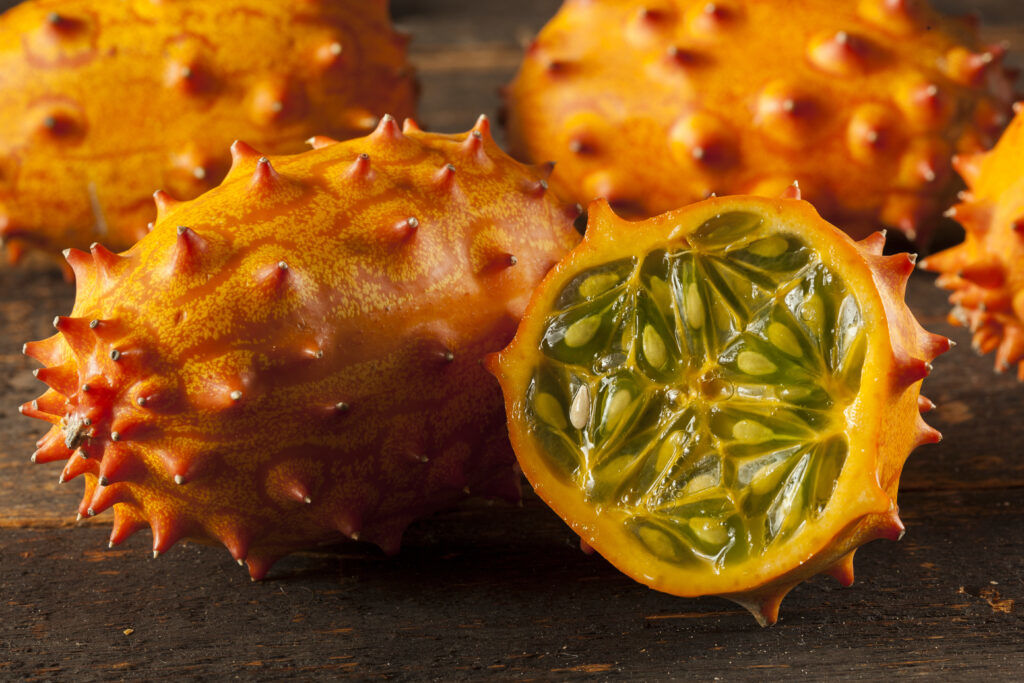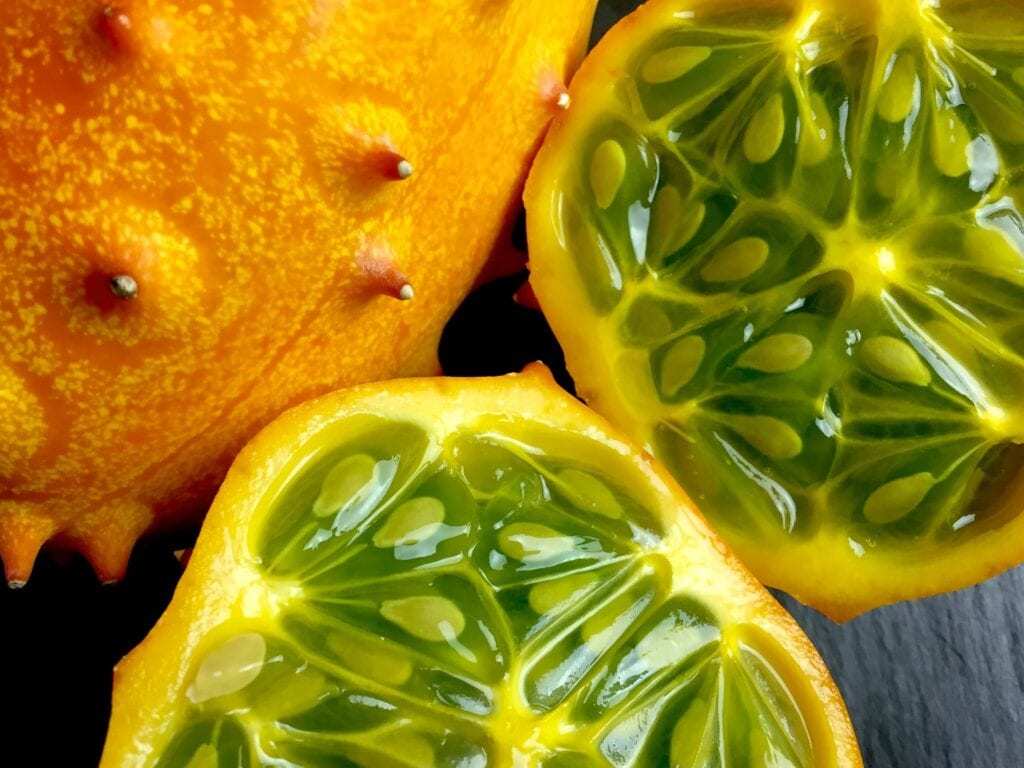
Horned Melon – Origin, Nutrition Profile, and Benefits
Every year, the latest discoveries and unearthed phenomena walk into our life, transforming it completely. However, incorporation of certain discoveries such that of nutritious fruits and vegetables can augment our health significantly. Currently, the world is buzzing with the talk about a weird-looking fruit, the Horned Melon or Kiwano Melon. This intriguing fruit has spikes on the external surface and a rather cucumber-ish flesh. Let’s dive deeper into the topic and explore the regimes of Kiwano Horned Melon!
Where did the Horned Melon come from?
More commonly known as Kiwano, Horned Melon traces its origin back to the desert lands of Africa. The unique fruit initially got discovered by the people residing in or near the Kalahari Desert. With massive consumption, as the benefits of the fruit gradually unraveled, it started gaining global attention. Quite too soon, the fruit became commonly available in the markets of California, New Zealand, and every other place.
Rarely used for ornamental purposes, this fruit has an oval shape with horns all over its surface. Inside its rough, orange rind, there are several edible seeds with yellow and green-colored gelatinous pulp. Thus, it often gets compared to pomegranate and cucumbers.
It possesses an insipid taste, yet it is expensive. That’s because, even today, it gets cultivated in fewer places. The main flesh of this melon does not get liked by many. But when served with a sprinkle of sugar, it tastes great. Due to its low sugar content, and lesser fruit-like qualities (like the absence of aroma), it is consumed as a supplement rather than a fruit, especially in Africa. Other than that, the fruit looks and tastes great in mix fruit salads.

Nutrition Profile
The Horned Melon has proven to be a very beneficial addition to one’s diet. It withholds an assortment of minerals and vitamins that are essential for healthy body development. A 209-grams portion of Kiwano melon can provide the following nutrients:
- 92-Calories
- 3.7g of proteins
- 16g of carbohydrates
- 2.6g of fats
- 13% of Iron (RDI)
- 21% of Magnesium (RDI)
- 3% of Calcium (RDI)
- 7% of Vitamin B6 (RDI)
- 8% of Phosphorous (RDI)
- 18% of Vitamin C (RDI)
- 5% of Potassium (RDI)
- 7% of Zinc (RDI)
- 6% of Vitamin A (RDI)
(* Reference Daily Intake)
Apart from these valuable nutrients, the Horned Melon comprises of large water content. Considering these stats, the Horned Melon fulfills almost all the bodily requirements and can improve one’s overall health ranging from neurological to physical conditions.
Advantages of Eating Horned Melon
As mentioned earlier, Horned melon is not as promising as other fruits, in terms of taste. But that doesn’t mean that it does not deserve a special position on your table. Sure, it does! And let me tell you why.
Firstly, the vibrantly orange exterior of the fruit possesses great ornamental value. That’s because you can serve a complete, nutritious fruit salad in it. It will certainly be the show-stopper of your party-table. Apart from that, the fruit provides a good dose of protein, carbohydrates, minerals, and vitamins. Thus, contributing to the maintenance of optimal health. With its high Vitamin A & C content, it is an excellent source of anti-oxidants and also protects against inflammation. By providing 13 percent of the total iron required by the body, it also promotes the production of red blood cells. Another thing that makes the fruit one-solution for all problems is the fact that it has high water content. Thus, it also keeps you sufficiently hydrated!

Ways to Eat Horned Melon
With an unearthly appearance, many people end up asking questions like ‘How to eat Horned Melon’ or ‘How to cut Horned Melon’
Well, despite the inedible look, eating a Kiwano Horned Melon can be a matter of simple delight. Firstly, hunt for a ripened Horned Melon as the unripe ones can give you a rather nasty experience. The ripened fruits will have an orange rind with considerable spikes. Try to squeeze in a bit to check whether the interior is soft or not. Concisely, if the Kiwano Melon pushes in and then pulls back congratulations! You have found a well-ripened fruit. Now, wash the Kiwano Melon to avoid the invasion of pesticides and germs into the interior. After that, cut it in half using a sharp knife. (Make sure that you do not injure yourself!)
Successfully, you have completed the first few stages. Now, decide on the ways you will like to eat your fruit. At times, people eat Horned Melon raw with or without the rind.
Some other ways to eat Kiwano Melon includes:
- Add to a fruit salad
- Garnish your roasted meat with Kiwano kernels
- Turn it into Kiwano Salsa
- Garnish cocktails
- Make smoothies
Leave your comment
You must be logged in to post a comment.